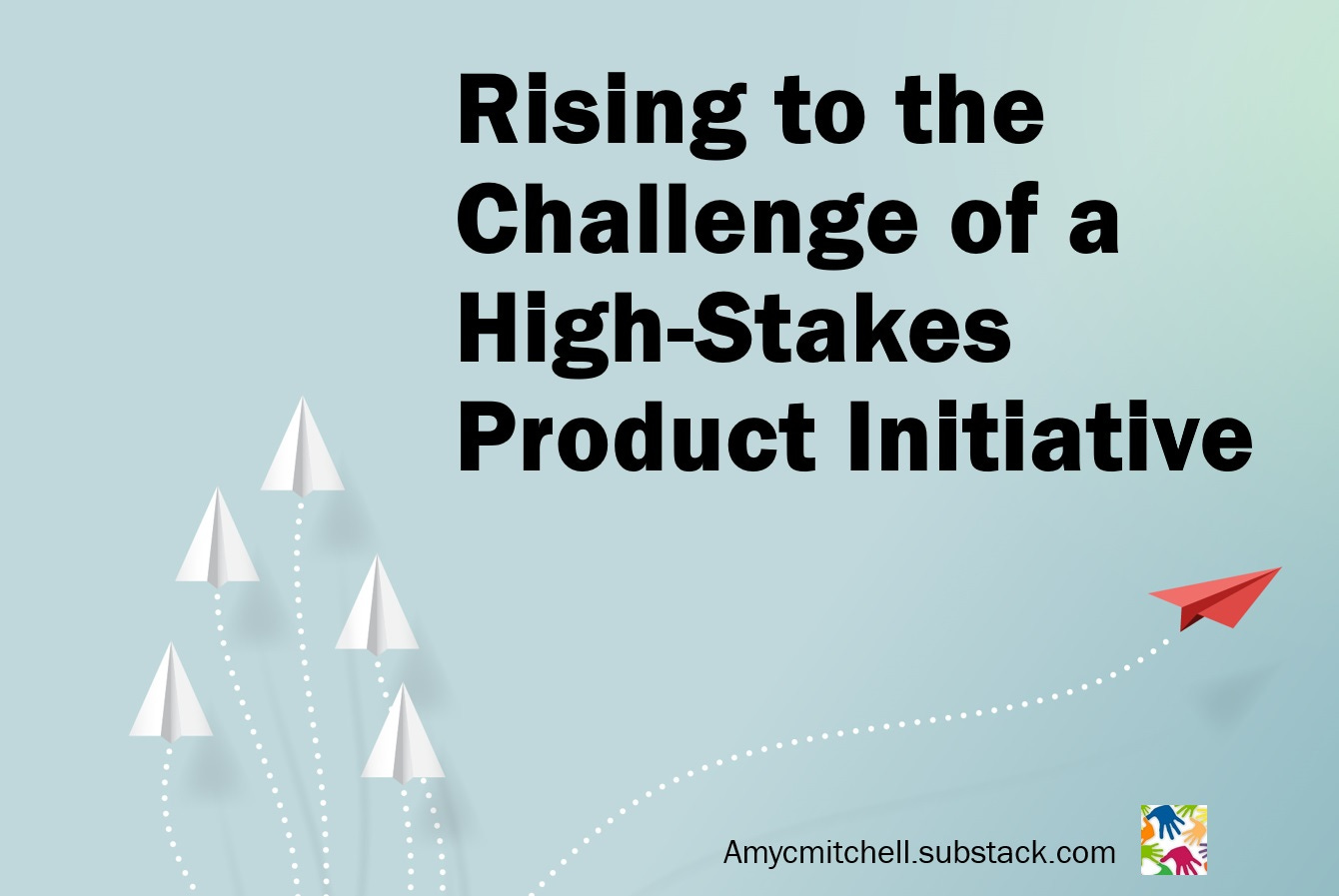Rising to the Challenge of a High-Stakes Product Initiative
Leading with Agility
The challenge is clear - you need to lead an urgent and high-visibility product initiative. Your stakeholders want this product initiative quickly before doing other product work. This is so important that you have been relieved of all other initiatives!
How Come There are More Urgent Product Initiatives?
Product managers are seeing this situation more and more. Some examples of urgent product initiatives are:
Security or compliance issues with the product or brand damage risk
Modernization program with a monetary deadline
A crisis such as a natural disaster or cybersecurity event
A customer experience issue to resolve before a revenue impact
These examples need a product manager to drive innovation, meet customer needs, and support dynamic business objectives. A product manager is in the best position to lead these types of initiatives.
How do you get this going and enable a high-quality outcome in a short timeframe?
The simplest answer is - do it. Here are the steps.
Step 1: Establish Clear Objectives
You will be surprised by the differences in opinions among your sponsors and stakeholders! Write a 1-pager to get buy-in to the objective of the product initiative.
The key items for the objectives are:
The market and customer driver
The concept and how you will address the market and customer need
The business opportunity
Key dependencies
Here is an example:
An urgent security compliance fix
Market/customer driver: customers need to trust their data is protected
The concept: software fix for affected customers
The business opportunity: significant contract penalties if security is breached
Dependencies: account teams need to communicate to affected customers
This becomes your 1-pager for this product initiative.
Step 2: Build a Cross-Functional Team and Roadmap
Break down the objectives for easy alignment with organizational boundaries. You are going to find some requirements don't fit any organization. Focus on getting agreement on responsibilities as early as possible. Use your customer knowledge to confirm coverage is complete.
As you build the cross-functional team, draft the roadmap for the product initiative. Review the roadmap with the team as you define the requirements. This is the roadmap for this product initiative. It has much more detail than your typical product roadmap.
Iterate on this roadmap as you pull the cross-functional team together.
Step 3: Communication Plan
While building the team and the roadmap, discuss the best ways to stay in touch. Being part of this urgent and high-visibility initiative means all communication is transparent. There are no special documents for engineering or executives for example. Documents are in a shared space and the whole team contributes written material in the shared space.
This is going to result in a hierarchy of documents. The key items are:
The executive summary with the objectives, roadmap, dependencies, and risks
The business case
Summary requirements linked to your requirements tracking system
Functional plans
Roles and responsibility matrices with process maps
Demonstrations and functional walk-throughs
Keep focused on these documents so you and the team can keep stakeholders informed about your progress.
Establish chat channels with key stakeholders and key product team members. Provide quick updates and links to the working documents. Don't expect a response - keep them updated.
Step 4: Manage Risks and Challenges
This is one of the most critical parts of your initiative! Due to the high visibility and urgency, you need to be extra assertive about nipping issues early. You need to openly discuss escalation triggers and deadlines. Also, give the team plenty of opportunity to correct your misunderstandings about the initiative.
At first, the risks show up as questions. As you work with the team and gather commitments, the questions will turn into risks, dependencies, and roadmap items.
For example:
Early question: Can the platform team support this initiative?
Dependency: Requirement must be requested by the end of the month
Risk: Platform release testing might affect the UI late in the plan
Roadmap: shows the dependencies
Early question: How to calculate the business impact?
Dependency: Review business case with sales team
Risk: Sales might not commit to a higher forecast
Roadmap: shows the review with sales and updates afterward
Be very proactive in managing the risks and dependencies. Keep stakeholders aware of potential escalation items and triggers for escalations.
These initiatives depend on product managers to prioritize activities that have the greatest impact on meeting the business objectives. Product managers need to focus on prioritization and risk management throughout the life of the product initiative.
Step 5: Celebrate Successes and Learning
Since this is a fast-paced product initiative, you as the product manager hear about successes and learning before the rest of the product team. This is your opportunity to celebrate wins and share learnings.
Based on the roadmap for the initiative, celebrate decisions and milestones on the way. When you learn something that affects the team, then share it quickly.
Conclusion - Leading with Agility
A combination of market developments, technology, customers, regulations, and internal dynamics are driving the increasing frequency of urgent and high-visibility product initiatives. When the time comes on your product, take these steps to lead the product initiative to completion:
Agree to clear objectives
Build a cross-functional team and roadmap
Communicate transparently
Manage risks and dependencies
Celebrate successes and learning
Product managers have a significant role in driving these urgent product initiatives. They are responsible for setting the direction, coordinating efforts across teams, and ensuring the initiative meets business needs.
While product managers are central to the initiative, they don't need to handle every aspect of the initiative alone. Collaboration with cross-functional teams and leveraging the expertise of program managers and stakeholders is crucial. Take these steps and your team will make the magic!
Want to know what happened after a recent article? Premium subscribers get a peak behind the scenes of a recent newsletter. Last week’s backstory covered a product strategy disconnect. Handling a Business Strategy Mistake
Connect to Amy on LinkedIn, Threads, Instagram and X/Twitter




